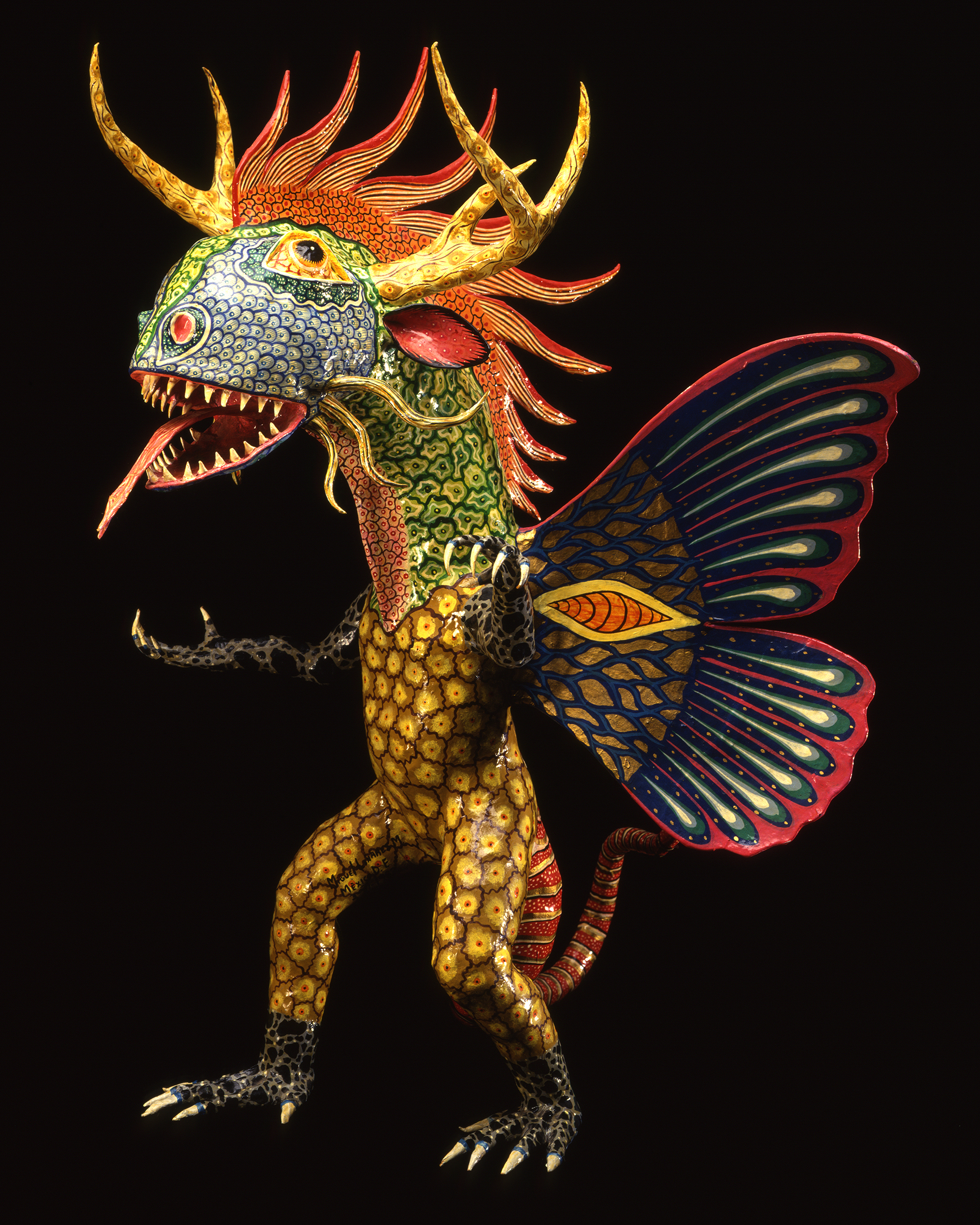Its body is a fierce combination of whimsy and terror, equipped with razor-sharp fingers on its feet and legs, and a sharp-toothed mouth, backed by antlers and a mane the color of fire. But on the monster’s back rests a pair of delicate butterfly wings, confirming that perhaps this creature is not purely dangerous, but is beautiful in its own right.
Adorned in a brilliant array of colors and between two and three feet tall, this winged papier-mache monster, or alebrije, is just one variety of creature featured in the currently running “Curious Creatures from Mexican Popular Arts” exhibition at the Fowler Museum.
The exhibition consists of roughly 40 pieces from the Fowler’s permanent holdings, said Patrick Polk, curator of Latin American and Caribbean popular arts. It represents an introductory look at some of the different ways in which animals are depicted in regional and family traditions.
Polk said that a walk through the exhibition will also bring visitors face-to-face with other depictions such as animals as musicians and animals that appear almost doll-like.
Because the tradition of animal portrayal in Mexican art is so rich and varied, Polk said, this exhibition is by no means a complete picture of the genre. Instead, “Curious Creatures” focuses in depth on five different categories.
One section holds the work of Teodora Blanco, a native of Oaxaca who became known as an innovative artist after developing the “embroidered clay” style of art. That is, she affixes decorative pieces of other material to the body of a work. Examples of her work include a donkey with a flute and an elephant with a mandolin, as well as a pig-woman carrying piglet musicians.
Continuing on, the exhibition displays the work of Herón MartÃnez Mendoza, a native of the state of Puebla who is known primarily for his animal-shaped pots ““ some unfinished and unpainted, while others have been coated with a white gesso, or plaster, and then painted with bright primary colors. The exhibition also features wood carvings of fantastical wildlife from the Oaxacan town of San Antonio Arrazola.
Another exhibition places visitors squarely in the path of “Devils, Demon Dogs, and Other Diabolical Beasts” from the village of San Pedro Ocumicho in the mountains of Michoacán. One variety of art in this category is ceramic “diabolitos,” which legend says gave the “Unholy One” and his servants places to live on Earth, thereby lessening their evil effects on those who inhabit it.
But the stars of the exhibit are the “alebrijes” by the Linares family of Mexico City, who are famous for their festival decorations, including pieces for Day of the Dead. The alebrijes on display in “Curious Creatures” represent a mixture of characteristics of animals both existing and fictional.
Polk said that the exhibition represents a look at pioneers in the world of Mexican popular arts.
“A number of the artists we’re looking at in this exhibition are the folks who are really the wellspring of the styles and forms that their regions have become famous for,” he said.
In addition to the exhibition itself, other events include a Kids in the Courtyard event called “Create! Cuckoo, Crazy, Curious Creatures!” at which attendants will make masks that tie in with the curious creatures of the exhibit itself, said Corrie Siegel, education manager at the Fowler.
Altogether, Betsy Quick, the director of education and curatorial affairs at the Fowler, said that the exhibition is a visually compelling collection that students will greatly enjoy exploring.
“This (exhibition) is really a feast for the eyes. … There’s a lot of humor (and) a wonderful examination of particular regional styles and certain families’ works.”
